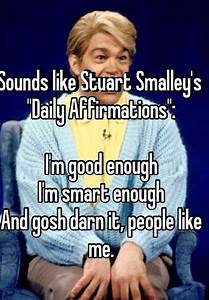 We Are All “Two-Minded”
We Are All “Two-Minded”
I like to compare the mind to an iceberg. The rational mind is the 20% or so that is visible above the surface, while the emotional mind is the much larger portion that hides below the surface. Some people call this the “subconscious” mind.
These are not separate parts of the brain, but they largely operate separately from one another. When we say we “know” or “believe” something, that is the work of the rational mind. When we say we “feel” something, that is the emotional mind.
We are generally unable to talk directly with the emotional mind, but it is constantly monitoring everything going on in our bodies and around us. It is all about our safety, and constantly searches for threats to our safety and security, including criticism. We can “reprogram” the subconscious mind by taking advantage of these facts.
Early Childhood Programming
Small children are especially susceptible to criticism. Many adults do not realize that when children are playing, even though they appear oblivious to what is going on around them, their subconscious minds are “taking it all in.” They are “wide open” and absorb everything said to and around them like little sponges. Because criticism is perceived as a threat, their subconscious minds quickly learn to monitor their social environments for negative statements; especially about them.
 For example, if one adult says to another, “Tommy’s picking his nose; he’s such a pig,” his subconscious mind will uncritically note that observation. He may show no reaction because his rational mind is not even involved. He will not question the statement; he will just store it away. If he absorbs enough such statements, they will become part of the way he sees himself. But he will likely never say – or even think – those thoughts aloud. He will never even have the chance to decide for himself whether they are true.
For example, if one adult says to another, “Tommy’s picking his nose; he’s such a pig,” his subconscious mind will uncritically note that observation. He may show no reaction because his rational mind is not even involved. He will not question the statement; he will just store it away. If he absorbs enough such statements, they will become part of the way he sees himself. But he will likely never say – or even think – those thoughts aloud. He will never even have the chance to decide for himself whether they are true.
By the time we reach school age, many of us are programmed to think very negatively about ourselves. Our own internal voices carry on the criticism we absorbed during those early days, and we carry those into our teen and adult lives.
But what can we do about this?
We can never completely clear those negative, critical thoughts from our minds. But we can replace them with more positive thoughts by regularly practicing “positive affirmations.”
Positive Affirmations
 If you are old enough (or if you’re a big fan of 90s TV), you might remember a recurring character on Saturday Night Live named “Stuart Smalley.” Created by comedian and future US Senator Al Franken, Stuart became so popular that he even published a book!
If you are old enough (or if you’re a big fan of 90s TV), you might remember a recurring character on Saturday Night Live named “Stuart Smalley.” Created by comedian and future US Senator Al Franken, Stuart became so popular that he even published a book!
Unfortunately, he was so successful that he literally made “positive affirmations” into a laughingstock. That is a shame, because they really do work, if used correctly.
Five Rules for Effective Affirmations
There are five elements to my “formula” for effective affirmations:
 Positive – Affirmations must be positive. Our minds do not process information in words; but instead in sensations such as sight, sound, touch, smell and taste. Our minds cannot “sense” concepts like “not” or “none.” Go ahead and try to imagine “not doing something,” or “not seeing something.” You cannot do it without imagining the very thing you are trying to “not think about.” So, affirmations must positively state what we want to DO; as opposed to things we want to NOT do, or do less. For example, “I will eat healthy,” instead of “I will not overeat” or “I will eat less.” How do you sense “eating less?”
Positive – Affirmations must be positive. Our minds do not process information in words; but instead in sensations such as sight, sound, touch, smell and taste. Our minds cannot “sense” concepts like “not” or “none.” Go ahead and try to imagine “not doing something,” or “not seeing something.” You cannot do it without imagining the very thing you are trying to “not think about.” So, affirmations must positively state what we want to DO; as opposed to things we want to NOT do, or do less. For example, “I will eat healthy,” instead of “I will not overeat” or “I will eat less.” How do you sense “eating less?”
Present Tense – Affirmations work best if they are stated in the present tense; even if they describe things that are not yet true. For example, “I eat healthy” instead of “I will eat healthy.” This might seem like a tiny difference – after all, it is just a single word – but it matters!
Third Person – Affirmations work best if they are stated in the third person; as if they were made about you rather than to or by you. For example, “John eats healthy” rather than “I eat healthy.”
Evocative – It must be very clear to you what the words in your affirmation mean. You must have a clear “sense” of those words. I, for example, am diabetic and have worked with many dieticians, nurses, and nutritionists, and even a chef, so I know exactly what “eat healthy” looks, sounds, smells, feels, and tastes like; at least for me. It doesn’t necessarily have to be scientifically accurate, and it doesn’t matter if others agree; it just has to be “evocative” for you.
 Brief – Finally, as every politician knows, we humans think in “bumper stickers.“ The fewer words the better. At three words, “John eats healthy,” is a near perfect affirmation. It can be learned and easily repeated over and over. It could also be posted on a mirror or on the dash of a car. That kind of repetition is one of the ways to reach the subconscious mind; which is really where we make almost all of our decisions.
Brief – Finally, as every politician knows, we humans think in “bumper stickers.“ The fewer words the better. At three words, “John eats healthy,” is a near perfect affirmation. It can be learned and easily repeated over and over. It could also be posted on a mirror or on the dash of a car. That kind of repetition is one of the ways to reach the subconscious mind; which is really where we make almost all of our decisions.
Are positive affirmations enough? No. But they are a start. If you practice them every day, your subconscious mind will “hear” you and accept your affirmations as true.
 Note to the grammar police: Yes, I know that the phrase “Positive Affirmation” is redundant, as “affirmations” are, by definition, positive; however, that is the familiar phrasing, so…
Note to the grammar police: Yes, I know that the phrase “Positive Affirmation” is redundant, as “affirmations” are, by definition, positive; however, that is the familiar phrasing, so…